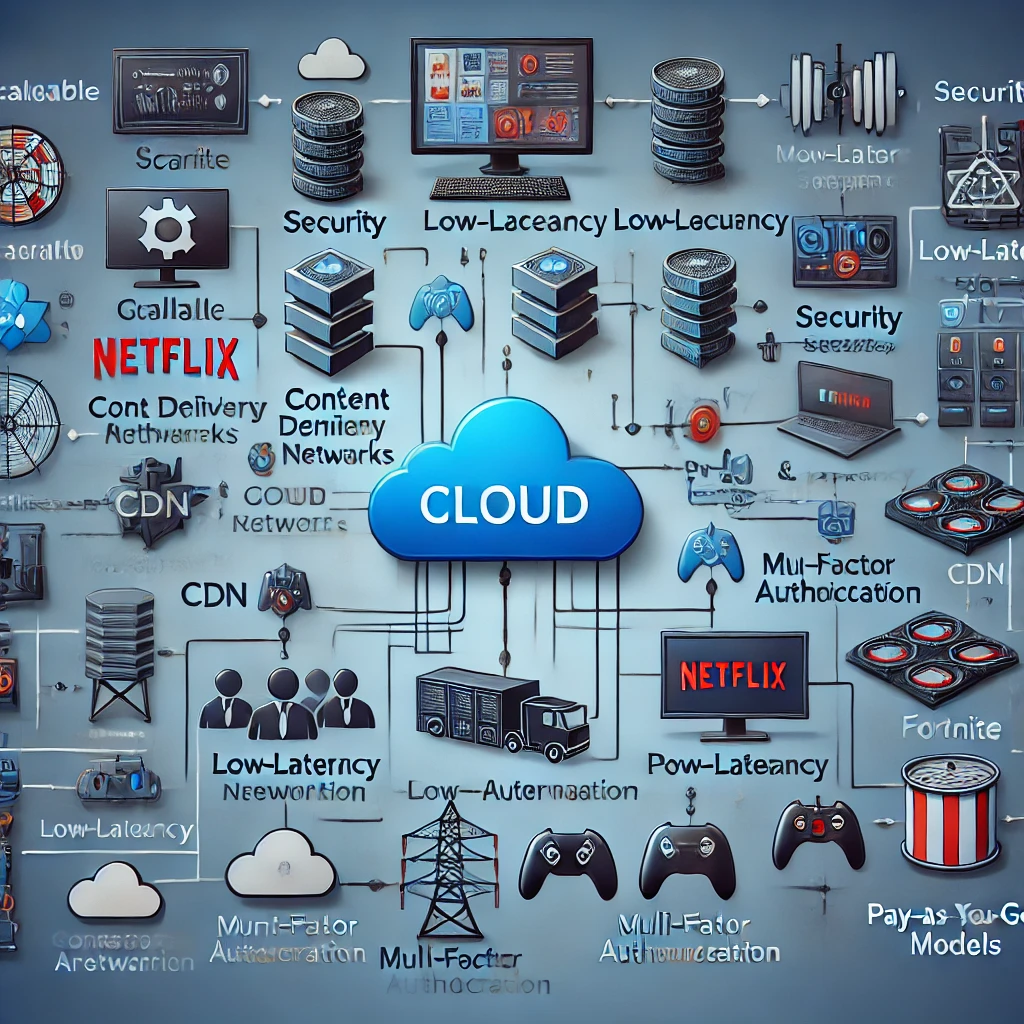In today’s hyper-connected world, cloud adoption is no longer a luxury but a necessity for gaming, media, and entertainment industries. By leveraging cloud technology, these sectors are not only transforming their production and distribution processes but also redefining the user experience. This shift is driven by the demand for seamless scalability, content personalization, and operational efficiency. This blog post delves into best practices for implementing cloud solutions, underpinned by real-world examples of successful cloud adoption by leading private and commercial enterprises.

This post is a summary of a Forrester Report shared on AWS Marketplace.
The Cloud Transformation in Gaming, Media, and Entertainment
Cloud technology is enabling these industries to enhance user experience, manage massive data volumes, and scale rapidly. Whether it is a global gaming company offering multiplayer experiences across continents or a media giant distributing live events worldwide, cloud technology provides the backbone for efficient and resilient operations.
- Scalability and Elasticity: Scalability is key to handling fluctuating demand, particularly in gaming. One great example is Fortnite, a battle royale game by Epic Games. With millions of concurrent users, Epic Games relies on cloud infrastructure to ensure that its servers scale up during peak times and scale down when demand decreases, maintaining optimal performance without unnecessary costs.In the entertainment industry, platforms like Netflix use cloud technology to serve personalized content to users around the world. Using cloud-based analytics and AI algorithms, Netflix can predict user preferences and adjust its content recommendations accordingly. The cloud’s elasticity is crucial for streaming services to provide seamless viewing experiences across multiple devices and regions.
- Security and Compliance: Protecting intellectual property and sensitive data is critical in these sectors. The entertainment industry, in particular, must comply with strict regulations like the General Data Protection Regulation (GDPR) in Europe. Cloud providers offer a range of security features such as encryption, multi-factor authentication, and compliance frameworks that help companies meet these stringent regulations.A real-world example is Walt Disney Studios, which uses cloud services to secure its massive archives of digital content while maintaining compliance with international data protection laws. The cloud’s ability to ensure data integrity and security is a major factor in its widespread adoption.
- Low Latency and High Availability: Gaming, media, and entertainment require low-latency environments for a smooth user experience. Cloud service providers enable content to be distributed closer to the end-users through Content Delivery Networks (CDNs) and edge computing, reducing latency significantly. For example, Twitch, a popular streaming platform for gamers, uses cloud-based CDNs to deliver live streams with minimal delay, ensuring a near real-time experience for viewers around the globe.
- Cost Efficiency: Cloud adoption allows for a pay-as-you-go model, reducing the need for heavy capital investment in physical infrastructure. Both large and small gaming studios benefit from cloud computing by accessing powerful computing resources without the need to maintain their own data centers. Startups, such as Supercell, creators of Clash of Clans, could scale and manage their game servers without large upfront costs, allowing them to focus on innovation.
Challenges and Considerations
While the cloud offers numerous advantages, there are some challenges to be aware of. Managing multi-cloud environments can lead to complexity in operations and troubleshooting. Latency can still be a concern in regions with limited infrastructure, and companies must constantly monitor and optimize their cloud strategies to ensure efficiency.
The convergence of cloud technology with the gaming, media, and entertainment sectors is driving significant innovation. Companies like Netflix, Epic Games, and Disney demonstrate how cloud adoption enhances scalability, security, and cost efficiency, while delivering exceptional user experiences. By following best practices such as leveraging elasticity, prioritizing security, and ensuring low-latency performance, businesses in these industries can remain competitive and future-proof in a rapidly evolving digital landscape.

